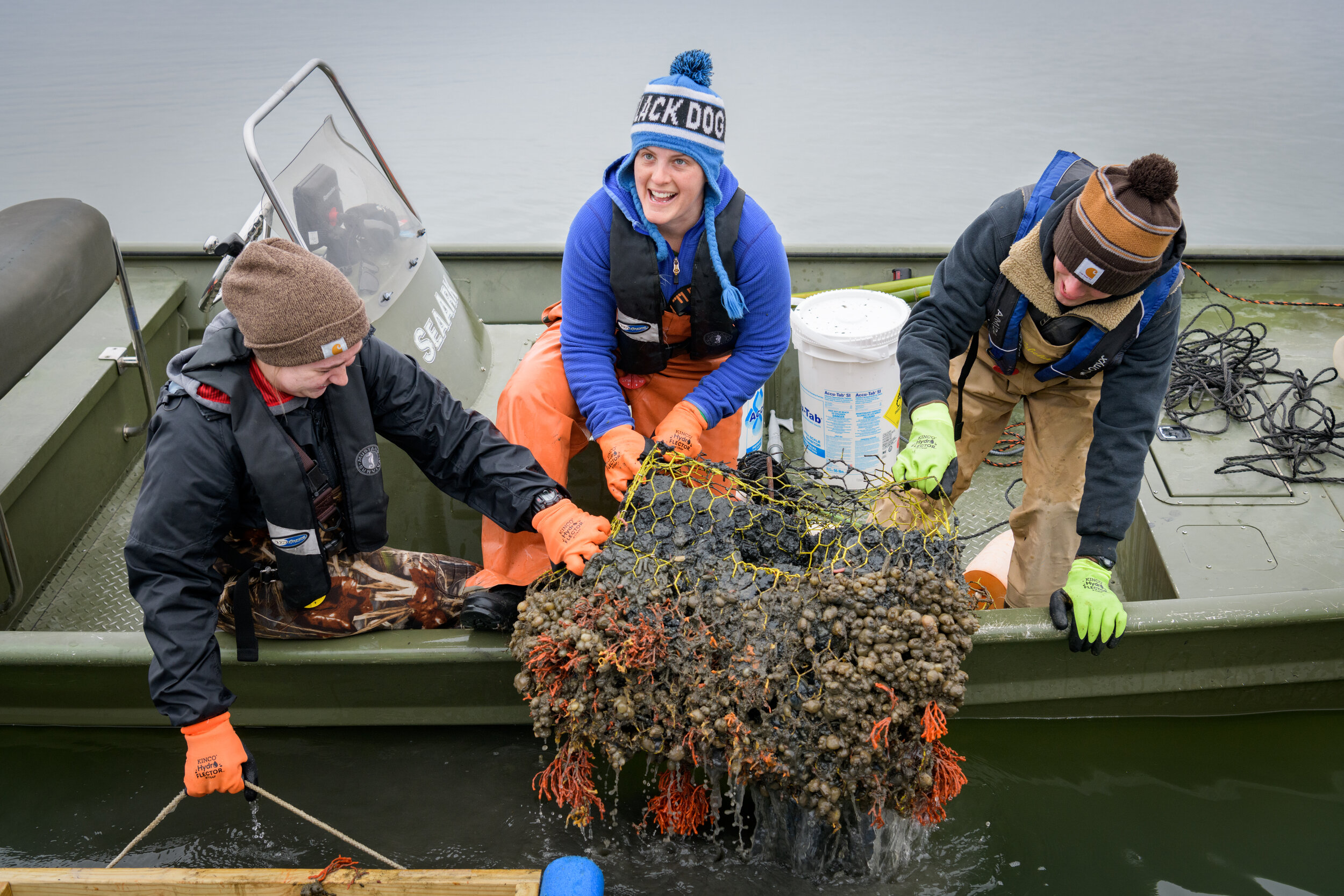
Citizen Water Quality Monitoring Program
Citizen scientists have been measuring Delaware's Inland Bays and tidal rivers for nutrients and harmful algae since 1991. This extensive record has enabled impactful research on algal blooms across Delaware's watersheds and played a key role in the safe implementation of oyster aquaculture in the Inland Bays. Learn more about the program
Derelict Crab Pot Removal
The Delaware Department of Natural Resources and Environmental Control (DNREC) is collaborating with the University of Delaware and Delaware Sea Grant to not only remove hundreds of derelict crab pots from Rehoboth Bay (one of Delaware’s three Inland Bays), but also to collect information on locally-relevant impacts, which will form the basis of outreach and education to Delaware’s recreational crabbers and boaters. Learn more about derelict crab pots
Invasive Species
Invasive species—whether plants, fish, mollusks, crustaceans or others—threaten local wildlife through outcompeting them for resources, outright predation, or altering habitat. In Delaware and the Mid-Atlantic, a variety of aquatic invasive species affect both freshwater and saltwater habitat, and terrestrial ecosystems face their own invasive challenges. Learn more about some of the invasive species in our area and what you can do to help on our invasive species page.
Submerged Aquatic Vegetation (SAV)
SAV, such as wild celery, eelgrass and widgeon grass, plays a critical role in maintaining water quality, providing habitat for aquatic species, and supporting coastal resilience. The Delaware Sea Grant in conjunction with the Delaware Department of Natural Resources and Environmental Control and the Delaware Center for the Inland Bays co-leads the Delaware State-wide Submerged Aquatic Vegetation (DeSSAV) Workgroup, a collaborative effort dedicated to understanding, protecting, and restoring vital underwater plant habitats in Delaware's waterways. Through research, monitoring, and community engagement, the workgroup works to ensure the long-term health of these essential ecosystems. Learn more about SAV and our efforts by visiting delawaresav.org.





